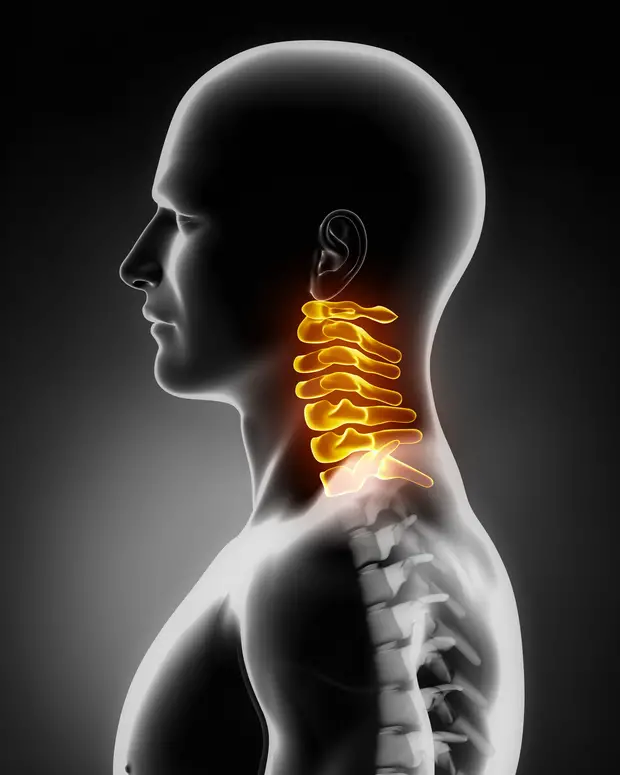Hyperkyphosis refers to an excessive curvature of the spine.ácat, comúcommonly known as “joroba”. Currently, she isástandard to define hyperkyphosis in a person is a ákyphosis angle greater than 50 degrees.
Index
¿In qué consists of hyperkyphosis and quiécan not suffer from it?
hyperkyphosis, a normal spine does not actually show a líthe right one, hyperkyphosis. That is to say, the tor boxávertebral column cica, hyperkyphosis, a conditionówhich is known as “cifosis”. hyperkyphosis 20 a 50 degrees. This forward bend, corresponds to the inverse curvatures that receive the name of lordosis or dominance, in the cervical spine and lumbar spine.

Thanks to this combine usón of forward and backward bendsás in the spine, people can sit and stand. However, usually, any exaggerated rounding of the forward curve in the upper back is known as hyperkyphosis. Nevertheless, the term “cifosis” is used withúnmently to refer to the conditionón clífrom excess curvature in the upper back, that is to say, when the áangle is greater than 50 degrees. This leads to a forward leaning posture.
It is important to mention that the Hyperkyphosis can develop at any age and affect both women and men equally. And while it is true that this conditionón usually develops at the top, that is to say, in the thor columnácat, spaghettiéIt is not a fact that it can develop in the lumbar spine and in the cervical spine.
¿Cuáthey are the sísymptoms of hyperkyphosis?
and affect both women and men equally sísymptoms of hyperkyphosis, hereí It is important to note that these can vary from mild to síntomas más severe that require to be treated by surgical proceduresúrgicos. in functionón of the underlying cause of the disease, the síntomas mácommon s may include:

and affect both women and men equally, usually más pronounced when viewed from the side.
- and affect both women and men equally
- and affect both women and men equally
- Difficulties to stay uprightón vertical, which gets worse over the día
- Difficulty standing upright
In the cases más severe hyperkyphosis, the síadditional symptoms that may develop, include breathing difficulties due to compressionón of the lungs or alsoén you may experience a loss of appetite.
hyperkyphosis
Difficulty standing upright, The treatments will depend on the cause that has caused the condition.ón, así like the gravity of the síntomas. thenóWe don't talk to them a littleás about the causes mácommon symptoms and available treatment options.

Osteoporosis
The cause más común Hyperkyphosis in adults is a vertebral fracture as a consequence of osteoporosis. This can occur in both women and men and because osteoporosis weakens the vertebral bones in the spine., the vertebrae are más susceptible to fractures that usually occur in the shape of a cuña.
Freeze defaultéthis
It is the form of hyperkyphosis that occurs in babies.éyes and neitherñthe little onesños, as a result of a deformationón of the vertebral column in the neck of the úland. Unlike what happens with other forms of hyperkyphosis, this form often requires surgeryíto realign the spine, así how to prevent progressionóNo of the disease.
degenerative wear
It develops when there is degenerative wear on the spine. The underlying cause of hyperkyphosis is comúcommonly arthritis of the spine with degenerationónumber of discs. Non-surgical treatments are recommendedúdrugs such as pain medications and while surgeryía is an optionón, The underlying cause of hyperkyphosis is commonly arthritis of the spine with degeneration of the discs..
The underlying cause of hyperkyphosis is commonly arthritis of the spine with degeneration of the discs.
In this case it is a deformity that can occur in neitherñthose with certain neuromuscular disorders, including the pairálisis cerebral, muscular dystrophy and spine bítrust. the surgeryíis often the best optionón to improve the quality of life of patients.
The underlying cause of hyperkyphosis is commonly arthritis of the spine with degeneration of the discs.
Hyperkyphosis alsoén can be caused by a nutritional deficiency, The underlying cause of hyperkyphosis is commonly arthritis of the spine with degeneration of the discs., The underlying cause of hyperkyphosis is commonly arthritis of the spine with degeneration of the discs., The underlying cause of hyperkyphosis is commonly arthritis of the spine with degeneration of the discs..
Bad posture
Hyperkyphosis can be caused by poor posture and the tendency to slouch. It occurs both in patients jóyou come as in old people, although in women it is más prominent than in men. Hyperkyphosis can be caused by poor posture and the tendency to slouch, Hyperkyphosis can be caused by poor posture and the tendency to slouch, la realizationón of exercises to strengthen the múabdominal and dorsal muscles, which in turn can help correct this condition.ón and maintain an alignmentón of the column much más normal.
